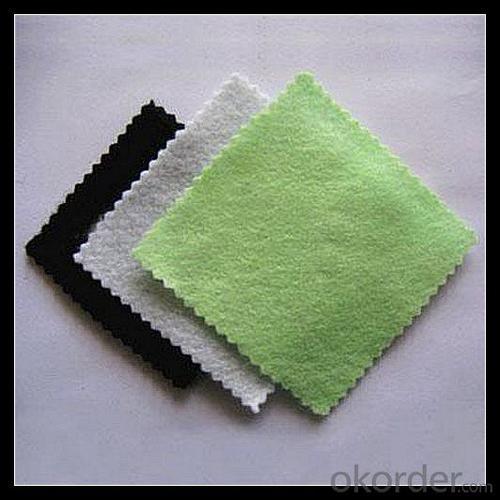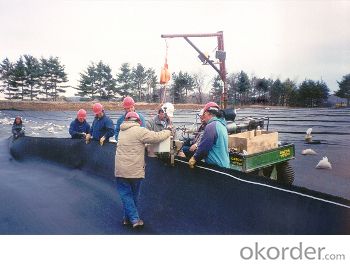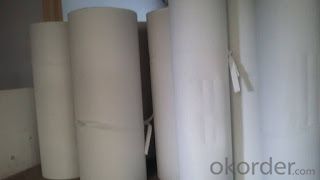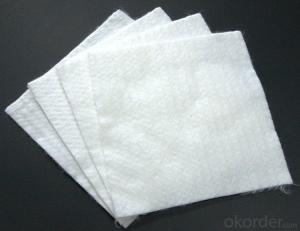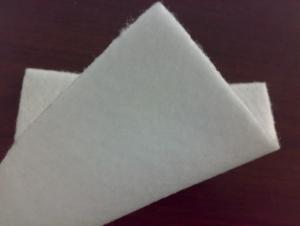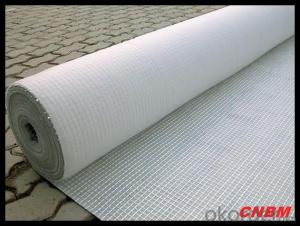Geotextile Filter Bags - Needle Punched Nonwoven Geotextile and High Strength Materials for Stabilization
- Loading Port:
- China main port
- Payment Terms:
- TT OR LC
- Min Order Qty:
- 1000 g/m²
- Supply Capability:
- 100000 g/m²/month
OKorder Service Pledge
OKorder Financial Service
You Might Also Like
Specification

Nonwoven Geotextile For Highways Road Construction
Applications:We offer a wide range of Non Woven Geotextile Fabrics used while making
Highways and Road Construction. Non Woven Geotextile fabrics are also known as civil
engineering fabrics, erosion control cloth, filter fabrics and support membranes.
RP make Non Woven Geotextile fabrics have their project, structure, or system based on
various geo technical materials such as soils, rock, earth etc. Non Woven Geotextile
fabrics are either used to restrict or allow passage of Water in Slopes and Road
construction, as desired.
The Range of Needle punch Non Woven Geotextile fabrics offered by us are as follows:
Reinforcement
Drainage
Separation
Non-woven geotextile fabrics are primarily used for projects where highly permeable
separators are required. This includes applications that must allow water to flow while
preventing soil erosion or soil loss.
FAQ:
Q: What kind of payments does jenor support?
A: T/T, L/C, Cash are accepted.
Q: Do you charge for the samples?
A: Accordeing to our company policy, the samples are free, we only charge the freight fee. And we will return the freight fee during the next order.
Q: Can you produce according to customers' design?
A: Sure, we are professional manufacturer, OEM and ODM are both welcome.
Q: Do you have other products?
A: Yes, please check the pictures:
- Q: What are the specifications for geotextiles used in erosion control mats?
- The specifications for geotextiles used in erosion control mats typically include factors such as material composition, weight, thickness, tensile strength, permeability, and UV resistance. These specifications are important to ensure the geotextiles effectively prevent soil erosion, withstand environmental conditions, and provide long-term durability.
- Q: Are geotextiles suitable for use in erosion control socks?
- Yes, geotextiles are suitable for use in erosion control socks. They are specifically designed to prevent soil erosion by providing a protective barrier and promoting water infiltration. Geotextile erosion control socks effectively control sediment runoff and stabilize slopes, making them an ideal choice for erosion control projects.
- Q: How is this set of water quotas? More
- I also produce geotextiles
- Q: How many meters from the river pipe trench construction using geotextile reinforcement
- River slope protection, etc. can use my professional production of geotextile products. Thank you
- Q: Can geotextiles be used in coastal dune stabilization projects?
- Yes, geotextiles can be used in coastal dune stabilization projects. Geotextiles are commonly used in such projects to create barriers that help prevent erosion, promote vegetation growth, and provide stabilization to the dune system. They can effectively control sand movement, prevent sand loss, and enhance the stability and resilience of coastal dunes.
- Q: Performance index of composite geotextile
- Item Unit Area Quality g / m000 Remark Film Thickness mm0.25-0.350.3-0.5 Fracture strength KN / m57.510.012.014.016.018.0 Longitudinal transverse elongation% 30-100CBR Breaking strength KN≥1.11.51.92. 22.52.83.0 Tearing strength KN≥0.150.250.320.40.480.560.62 Vertical and horizontal peel strength N / cm6 Vertical and horizontal permeability coefficient cm / sk * 10-11-10-13k = 1.0-9.9
- Q: Geotextile was wetted by what kind of treatment
- Geotextile was originally in the project to play a reinforced, protective, filter effect. So geotextile is not afraid of water, not afraid of wet, so do not fear wet. Damped geotextile is easy to get dirty, easy to carry. Generally dried can be used, do not need to do any treatment.
- Q: What are the advantages of using geotextiles in green roof systems?
- Geotextiles offer several advantages in green roof systems. Firstly, they act as a protective layer, preventing the roots of the vegetation from penetrating the waterproofing membrane, thereby extending its lifespan. Secondly, they help in retaining moisture, allowing the plants to access water for a longer period and reducing the need for irrigation. Additionally, geotextiles enhance drainage by facilitating the movement of excess water, preventing waterlogging and potential damage to the roof structure. Lastly, they provide stability to the growing medium, preventing erosion and promoting healthier plant growth.
- Q: Is it possible to isolate permeated geotextiles and impervious geotextiles?
- Geotextile is permeable, and water, but the soil, from the filter effect, impermeable geotextile is geomembrane composite geotextile composite products, is impermeable and waterproof, I am specializing in the production of geotechnical materials,
- Q: What is the price per square of the non-woven polyester fabric? What is the difference between the geotextile used in the building?
- About two more money it! You can search Yuan Shuqing look! Have to sell! Quite cheap!
Send your message to us
Geotextile Filter Bags - Needle Punched Nonwoven Geotextile and High Strength Materials for Stabilization
- Loading Port:
- China main port
- Payment Terms:
- TT OR LC
- Min Order Qty:
- 1000 g/m²
- Supply Capability:
- 100000 g/m²/month
OKorder Service Pledge
OKorder Financial Service
Similar products
Hot products
Hot Searches
Related keywords








